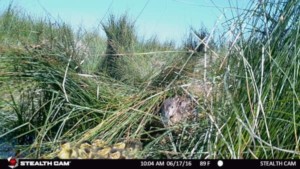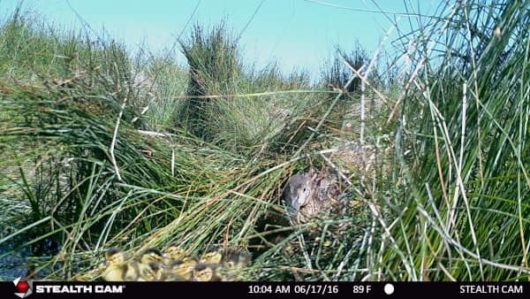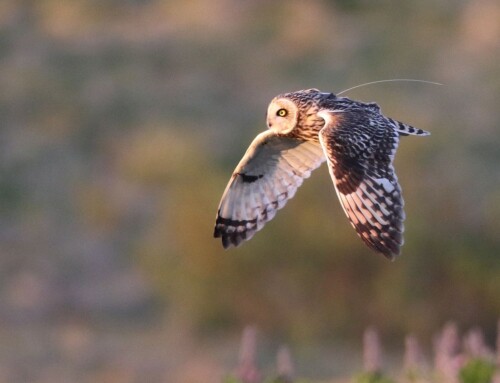LINKED PAPER
Factors influencing Cinnamon Teal nest attendance patterns. Setash, C. M., W. L. Kendall, D. Olson. 2020. IBIS. DOI: 10.1111/ibi.12838. VIEW
Cinnamon Teal, Spatula cyanoptera, are one of the most enigmatic duck species in North America as well as one of the most coveted by hunters and birders, alike. Until recently, waterfowl managers have lumped Cinnamon Teal in with the closely-related Blue-winged Teal, Spatula discors, when setting harvest limits, prioritizing breeding habitat, and estimating abundance because the females are nearly impossible to differentiate and their breeding habitats often overlap. The need to address differences in population size, habitat preferences, and behavior has recently been highlighted by the US Fish and Wildlife Service, however. The mechanisms driving their behavior during the breeding season may reveal important differences in habitat selection preferences and the selective forces behind them.
During incubation, all waterfowl must make decisions on when and for how long to leave their eggs unattended in order to maintain proper egg temperatures while ensuring they meet their own energetic requirements. When environmental conditions (e.g., temperature, precipitation, etc.) vary from day to day, the incubating parent can adjust their behavior to take advantage of beneficial conditions or face reproductive repercussions from failing to do so. In Cinnamon Teal, this can mean altering the number of recesses taken during a given day of incubation or altering the duration of a single recess. In theory, longer recesses could expose the nest to potential predators for more time, but more frequent recesses might result in activities that draw attention to the nest (i.e., movement, disturbed vegetation). The goals of researching incubating Cinnamon Teal were to determine whether individuals exhibited any patterns in incubation behaviors and whether those patterns were related to weather or vegetation around the nest.

Figure 1 A female Cinnamon Teal leaving her nest with her newly hatched ducklings © Casey M. Setash
In southern Colorado, one of the more heavily used areas of the Cinnamon Teal breeding grounds, incubating hens did, in fact, exhibit patterns in incubation patterns related to weather. Vegetation around the nest did not impact their incubation behavior as predicted, but they did make use of warming temperatures throughout the day to take foraging breaks. Birds on nests close to hatching took longer recesses in the afternoon, while those on newly-initiated nests took longer recesses in the morning and evening. In addition, warmer daily ambient temperatures resulted in a lower incubation constancy, which describes the proportion of the day a bird spends on the nest. In other words, if the temperature increased 30˚C, birds were predicted to decrease their incubation constancy by 11.2%. That equates to 161.3 more minutes spent off the nest foraging during which time the eggs are at a lower risk of getting too cold and females can replenish their energetic reserves.
The observed incubation patterns are similar to those of other small-bodied ground nesters and make sense from an energetic standpoint. The hottest part of the day affords incubating birds the opportunity to forage without putting their eggs at risk of cold temperatures and probably also coincides with the lowest predator activity levels at this Colorado study area. Research on Cinnamon Teal nesting behaviors can provide a clearer picture of the evolution of these behaviors as well as allow future researchers to disturb nesting birds less frequently by utilizing known timing patterns of incubation recesses.
References
Gammonley, J. H. 2012. Cinnamon Teal (Anas cyanoptera), The Birds of North America Online (A. Poole, Ed.). Ithaca: Cornell Lab of Ornithology. VIEW
Hohman, W. L. 1991. Incubation rhythm components for three Cinnamon Teal nesting in California. Prairie Naturalist 23: 229-233. VIEW
Image credit
Top right: A pair of Cinnamon Teal Spatula cyanoptera | Neil Mishler/US Fish & Wildlife Service | CC BY 2.0





